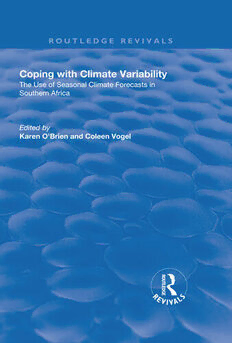
Coping with Climate Variability PDF
02018·2.701 MB·English
Most books are stored in the elastic cloud where traffic is expensive. For this reason, we have a limit on daily download.
Preview Coping with Climate Variability
Description:
This title was first published in 2003. Recent food shortages in Southern Africa, induced by rainfall variability but compounded by problems of governance and rising food prices, have resulted in massive relief efforts. A recent scientific innovation - supplying farmers with seasonal climate forecasts - has been touted as a way to increase preparedness for such situations. This book examines how climate forecasts are used by the agricultural community in Southern Africa. Based on a workshop funded by the World Bank, it covers a broad set of issues related to the use of seasonal forecasts, including factors that constrain users' capacities to respond. Case studies presented in the book explore how forecasts can potentially increase production and food security among a population highly dependent on agriculture and vulnerable to climate variability. The book reflects on how the production, delivery and uptake of seasonal forecasts might be improved, as well as the limitations to their usefulness, and it should catalyse future thinking and research in this field.
See more
The list of books you might like
Most books are stored in the elastic cloud where traffic is expensive. For this reason, we have a limit on daily download.
